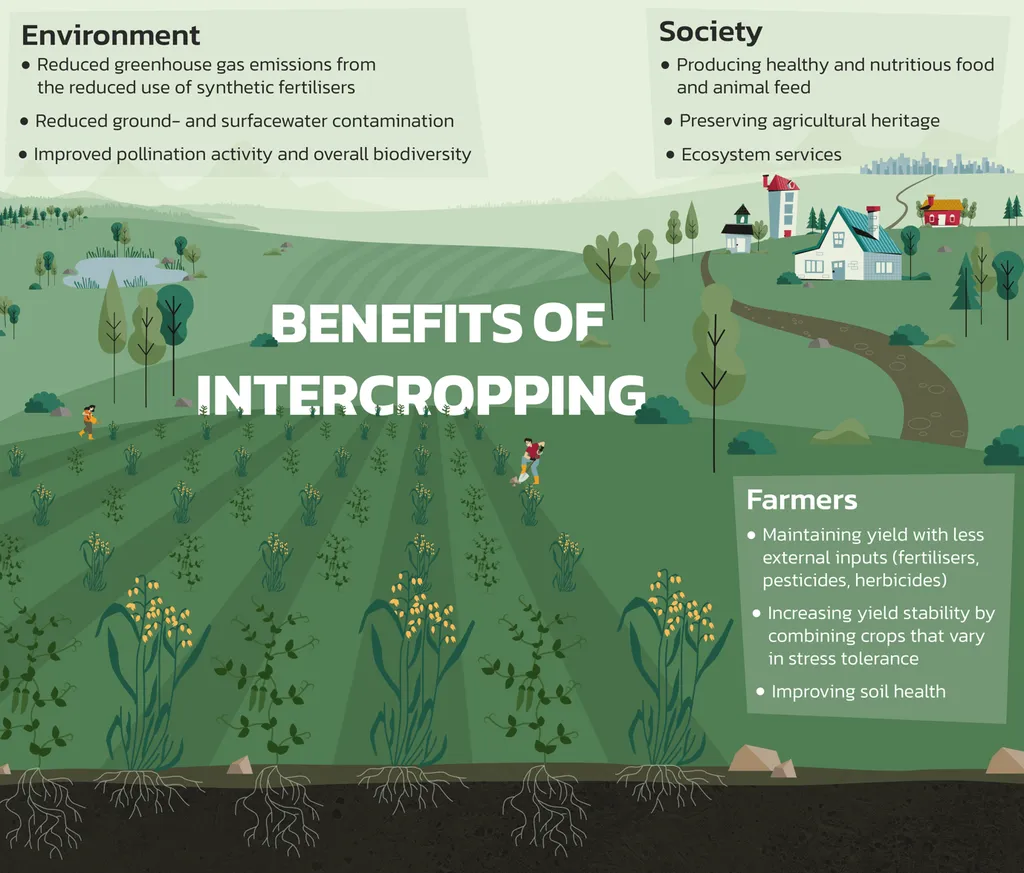In the quest for sustainable agriculture, a promising strategy is emerging from the fields of scientific research: consortium systems, or intercropping. A recent study published in the Emirates Journal of Food and Agriculture, which translates to the United Arab Emirates Journal of Food and Agriculture, led by Lucas da Silva de Abreu from the Federal University of Alagoas (UFAL), sheds light on the potential of these systems to revolutionize modern agriculture.
The research, a comprehensive review of recent scientific articles, delves into six main intercropping systems: grains and legumes, agroforestry, cover crops, crop-livestock integration, perennial annuals, and vegetables. The study employs a mix of meta-analysis, qualitative, and quantitative analyses to understand the benefits of these systems on soil quality and sustainable management.
The findings are compelling. Intercropping systems can increase productivity, significantly improve soil health, promote biodiversity, improve resource use efficiency, and strengthen climate resilience. “The results, visualized through Sankey diagrams and boxplots, reveal that these systems can increase productivity, significantly improve soil health, promote biodiversity, improve resource use efficiency, and strengthen climate resilience,” de Abreu explains.
Among the systems studied, the intercropping of grains and legumes and agroforestry systems demonstrated the most comprehensive benefits. Cover crops had a particularly strong impact on soil health, while agroforestry systems stood out in terms of biodiversity and climate resilience. The study also suggests a potential reduction in the use of chemical inputs, a significant boon for both the environment and agricultural businesses.
The implications for the energy sector are substantial. As the world grapples with climate change and the need for sustainable practices, these intercropping systems offer a viable solution. They can help reduce the carbon footprint of agricultural practices, improve resource efficiency, and enhance biodiversity, all of which are critical for a sustainable future.
However, the study also acknowledges challenges to large-scale implementation. “While the benefits are clear, we must also consider the practicalities of adopting these systems on a larger scale,” de Abreu notes. This includes factors such as labor requirements, market demand, and policy support.
As we look to the future, the adoption of intercropping systems could shape the trajectory of sustainable agriculture. It’s a strategy that not only benefits the environment but also offers commercial advantages, making it a win-win for both the planet and the agricultural sector. The research published in the Emirates Journal of Food and Agriculture provides a solid foundation for further exploration and implementation of these systems, paving the way for a more sustainable and resilient agricultural future.

